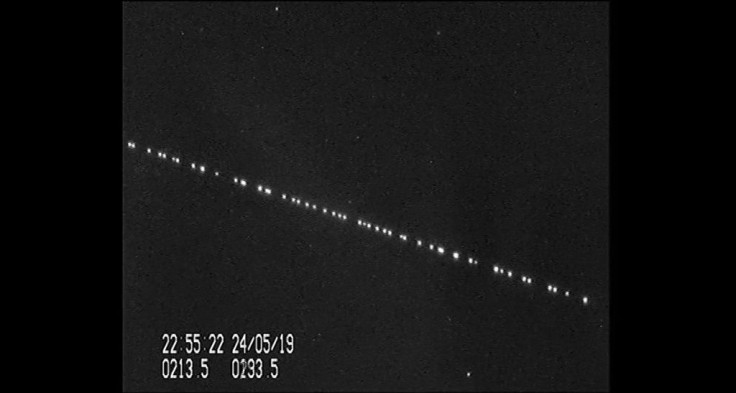SpaceX To Equip Starlink With ‘Shades’ To Reduce Satellites’ Brightness

KEY POINTS
- SpaceX aims to reduce the brightness of Starlink satellites
- SpaceX is working on a new concept known as VisorSat
- VisorSat is more effective than DarkSat
SpaceX founder Elon Musk recently confirmed that his company would test a new way to reduce the brightness of the Starlink satellites. According to Musk, the method basically involves equipping the satellites with shades.
Musk made the confirmation during a committee briefing for the next astrophysics decadal survey on April 27. The SpaceX CEO noted that the company aims to reduce the brightness of the Starlink satellites to minimize their effect on astronomical observations.
Currently, SpaceX has over 400 satellites in low-Earth orbit. The company plans to launch over 40,000 satellites to complete the project.
Due to the number and brightness of the satellites, astronomers warned that the appearance of Starlink units would disrupt astronomical observations and discoveries. This issue has been proven through a number of photos of cosmic objects being ruined by a train of Starlink satellites.
In an effort to resolve this matter, Musk promised to reduce the brightness of the Starlink units.
Recently, Musk confirmed that SpaceX is working on a new concept known as a VisorSat. Basically, it will act as a sun visor to block sunlight and prevent it from reflecting off of the satellite’s surface. Musk noted that the satellites would deploy their VisorSats upon reaching a certain altitude.
“We have a radio-transparent foam that will deploy nearly upon the satellite being released, and it blocks the sun from reaching the antennas,” Musk said during the committee briefing, according to SpaceNews. “They’re sun visors, essentially: they flip out and block the sun and prevent reflections.”
Musk hinted that VisorSat would most likely replace the DarkSat, an experimental satellite launched by SpaceX earlier in January. Unlike the other Starlink satellites, the DarkSat has less reflectivity.
Although DarkSat performed well and remains as a viable option for the company, Musk noted that using VisorSat is a much better solution for SpaceX.
“We found an option that is even better than that, which is basically to give the satellites shades,” he stated.
SpaceX will officially test the VisorSat through its next batch of Starlink satellites, which are scheduled to sometime in May.
© Copyright IBTimes 2025. All rights reserved.





















